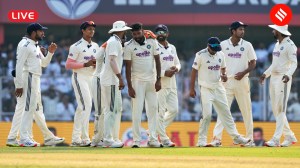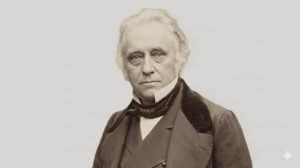Know Your City: Tracing legacy of a local ruler before Bangalore founder Kempe Gowda
Nagattara was a warrior and local chieftain of the area around Begur in modern-day Bangalore.
 The centrepiece of the hero stone is a chief of the Bana family, bearing the title Nagattara, at the moment of hos death in battle against an enemy known to us Viramahendra. (Illustration: Anirudh Kanisetti)
The centrepiece of the hero stone is a chief of the Bana family, bearing the title Nagattara, at the moment of hos death in battle against an enemy known to us Viramahendra. (Illustration: Anirudh Kanisetti)It has been nearly five centuries since Kempe Gowda established Bangalore, the fortified town that would become one of the great cities of India. But before Bangalore, the countryside was dotted with smaller fortified settlements—from Yelahanka to Hebbal and Begur — for which the local chieftains fought and died.
One of these many chieftains was Nagattara, a warrior and local chieftain of the area around Begur in modern-day Bangalore, who was sworn to the Ganga ruler Ereyappa. Rulers of the region known as Gangavadi had long been major powers in this part of southern Karnataka, in the contentious border region near the Tamil Kingdoms, from the time of the old Chalukya emperors to the Rashtrakutas—either as enemies or as vassals to the major powers.
One of the best attestations of Nagattara is a nearly six-foot-tall “hero stone” that commemorates the battle in which he was killed around the early 10th century AD. The battle was waged against another local power, the Nolambas, who ruled the area around Nandi Hills. It is currently housed in the government museum in Bengaluru.
Historian Anirudh Kanisetti notes, “By the 9th to 10th century, Begur was among the more powerful towns. In the vicinity of the Begur temple, a large number of hero stones were commissioned.”
However, the stone that marks Nagattara’s death in battle is different in some ways. Kanisetti says, “This attests to a much larger conflict than most hero stones. It says that the chief was summoned by the Ganga king and sent to fight a battle with the Nolamba king. If you look at the scale of the conflict that is depicted…..with cavalry and elephants being deployed, these are very expensive animals that only larger kingdoms have the resources for.”
Kanisetti notes that Nagattara’s importance as a local ruler is also shown by the carving that illustrates him leading a cavalry group to attack. In the aftermath of the battle, the Ganga ruler rewarded his heir with the territory of several villages.
Kanisetti says, “There seems to have been a tendency towards large hero stones in medieval south Karnataka. In north Karnataka, you tend to see very finely detailed stones that are not necessarily as large. But in terms of the size and details depicted, the Begur hero stone is quite remarkable.”
Interestingly, Kanisetti notes that it is not certain that the “Nagattara” mentioned in various carvings is the same person. It may have been a title or the name of a particular family. But what is also certain is that in a stone inscription at the Begur Temple mentioning the death in battle of one Butanagapati, son of Nagattara, one can find the first written mention of the word “Bengaluru”.
While the rulers mentioned in the stone depicting Nagattara’s death could determine its age, the matter is not as straightforward with the second stone. Kanisetti states that, based on factors such as the writing style, it is possible that it was carved around the 9th to 10th century AD.
Although the “Bengaluru” referenced on the stone may not have been as impressive as the later capital established by Kempe Gowda, the name itself had likely been recognised for a much longer period. This suggests that it existed well before the myth about “boiled beans” and the tale of the region’s naming by the Hoysala ruler Veera Ballala.







